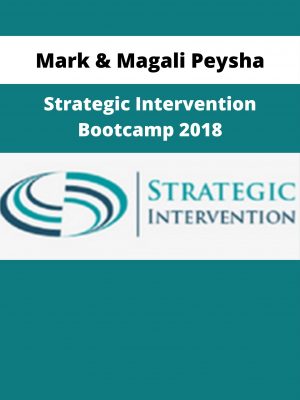Sharon Tang – Legislation Notes
$300 Original price was: $300.$64Current price is: $64.
Shopping Instructions:
- DISCOUNT 15% : SHOP15
- Product Delivery: Within 1 – 12 hours after purchase.
I have a BPharm (1996) and a PhD in Pharmacognosy (2003) obtained from the University of London School of Pharmacy and have worked in community and in hospital in the UK.
Sharon Tang – Legislation Notes
Your Instructor
Sharon Tang
Started this online tutorial platform in September 2017. I have a BPharm (1996) and a PhD in Pharmacognosy (2003) obtained from the University of London School of Pharmacy and have worked in community and in hospital in the UK. Since moving to Hong Kong several years ago I have passed the registration exams (2012). I have also taught pharmacology and human disease topics to pharmacy technicians and student nurses, which included writing exams and marking them. The Facebook group I run provides support for pharmacists taking the Hong Kong pharmacy registration exams.
Course Curriculum
-
Preview
Introduction
-
Preview
Summary of the sections
-
Preview
Introduction – ASPs, LSPs, and Basics of Poisons Categorisations
- Medicines that can be kept in ASPs and LSPs
- Authorised Seller of Poisons (ASP) (S.11)
- Each premises is required to be under the control of a pharmacist (S.12)
- Registration of premises (S.13)
- Code of Practice for ASPs
- Display of Logo, and restriction on use of titles
- Listed Seller of Poisons (LSP) (S.25)
- Introduction
- Relevant sections of the Ordinance/Regs
- Labelling of Poisons (S.27)
- Exemptions for medicines (S.28)
- Extensions and relaxations (R.4)
- Supplementary Provisions for labelling (R.12-17)
- Transporting of poisons (R.21)
- Labelling requirements for manufacturers (R.31)
- Sale of medicines (R.38)
- Labelling of Part 2 and Non-Poisons (R.38A)
- PPB Code of Ethics – Mandatory labelling requirements for dispensed medicines
- Institutions (R.22,23)
- Dangerous Drugs (cap 134A)
- Storage requirements (R.19)
- Wholesale – Relevant sections in the ordinance
- Definition
- Who can wholesale (R.25)
- Who wholesale dealers can sell to (R.27)
- Records (R.28)
- Recall system (R.28(8))
- Application for wholesale dealer license (R.26)
- Wholesale of Dangerous Drugs
- Code of Practice for Holder of Wholesale Dealer License
Get immediately download Sharon Tang – Legislation Notes
- Manufacturing – Introduction and the GMP
- Licensing of manufacturers (R.29)
- Authorised Person (R.30A)
- Obligations and Duties
- Supervision (R.30)
- Health and hygiene of workers (R.32)
- Premises (R.34)
- Labelling (R.31)
- Quality Control and Recall System (R.33)
- Record keeping (R.35)
- Sale and supply (R.27)
- Dangerous drugs
- Definitions
- Registration of products and substances – Introduction
- Registration of products and substances (R.36)
- Particulars to be registered (R.36A(3))
- Registration certificate (R.36(5))
- Clinical trials and medicinal tests (R.36B)
- Factors relevant to determination of applications (R.37)
- Dangerous Drugs – Introduction
- Definitions
- The Dangerous Drugs List (Schedule 1)
- Example of forensic classification – Codeine
- Homework
- Trafficking (S.4)
- Supply (S.5)
- Import, Export, and Transit (S.10-21)
- Authority to procure, supply and possess (S.22-23)
- ASPs and LSPs (S.24)
- People who are allowed to possess DD (S.25)
- Supply of DD on prescription (S.31)
- Prescription requirements (R.3)
- Labelling (R.4)
- Record keeping (R.5-6)
- Antibiotics Ordinance – Sections 1 & 2
- Section 3 – Substances to which the Antibiotics Ordinance applies
- Section 4 – Sale and Supply of Antibiotic Substances
- Section 4 – Administration of Antibiotics
- Section 4 – Prescription requirements
- Section 5 – Possession of Antibiotics
- Section 6 – Antibiotic permits
- Section 7 – Record keeping
- Schedule 8 – Notification that no scheduled antibiotics may be sold
- Section 9 – Inspections and enforcement of Ordinance
- Cap 137A – Antibiotics Regulations
- Undesirable Medical Advertisements Ordinance
- Definitions
- Prohibitions and Exceptions
- Schedule 1 – Prohibitions and exceptions continued
- Schedule 2 – Purposes for which it is prohibited to advertise any medicine, surgical appliance or treatment
- Responsibility
- Certain defences
- Prohibitions and Exceptions for Orally Consumed Products
- Penalty, power to amend, enforcement
Related products
Business & Sales
Business & Sales
Business & Sales
Business & Sales
Internet Marketing
Business & Sales
Business & Sales












